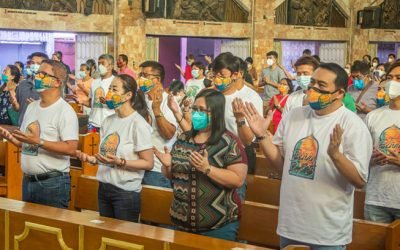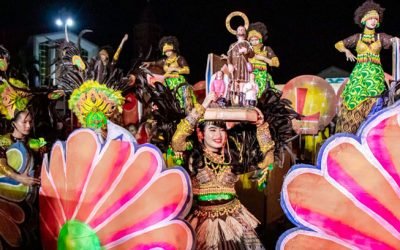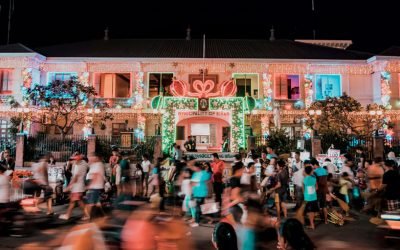With a playful music to reverberate the intrinsic humor and element of a folk game through luksong tinik (jumping spines) in its choreography, “maglalatik” narrates a harmless battle between two religious warriors over the most prized latik, the sweet oil and curd residue from slow-simmered coconut milk. The Muslims of the southern Philippines are dressed in red trousers while the Filipino Christians of the lowlands are wearing blue. Both have halved empty coconut shells strapped to their bare torsos, hips, and thighs in addition to the ones that they hold in each hand for hitting the other shells, which produce beautifully rhythmic sounds with the music. The dance is divided into four parts: the palipasan and the baligtaran which show the warfare between the two groups, and the paseo and the escaramuza which stage the supposed reconciliation. The ending of the story tells that the Moros won the battle, but the Christians saw an opportunity in conciliation to baptize the former.
The combative body movements from Filipino martial arts could be recognized in the “maglalatik” dance. There are the sinawali movements, which are double-stick movements from arnis that simulate the crisscross pattern of the sawali, a woven split bamboo mat. Sinawali movements are visually appealing and audibly exciting as they fabricate an illusion of an eventful occurrence as sticks strike. There are also the gunting (scissors) movements from suntukan (fistfight), which form took off from a pair of scissors as one hand traps the opponent’s attack while the other cripples the opponent’s striking arm.
Remnants of the “maglalatik” tradition are found in Biñan as it has become a part of the city’s heritage. Being a dance with a narrative that highlights the highly symbolic agricultural product latik, the maglalatik is said to have been performed as part of a religious procession as an act of offering to Biñan’s patron saint, San Isidro Labrador, who is also the patron saint of farmers. Biñan used to be a vast agricultural land called the Hacienda de San Isidro Labrador de Biñan.
The maglalatik was first danced by the mighty men of Loma and of Zapote as the two were once a single community. Now, the maglalatik dance is one of the main highlights of the yearly Puto Latik Festival of Biñan.




